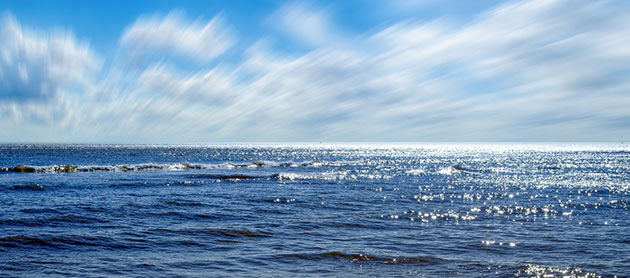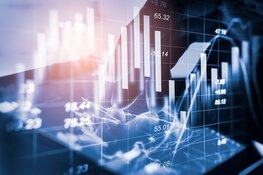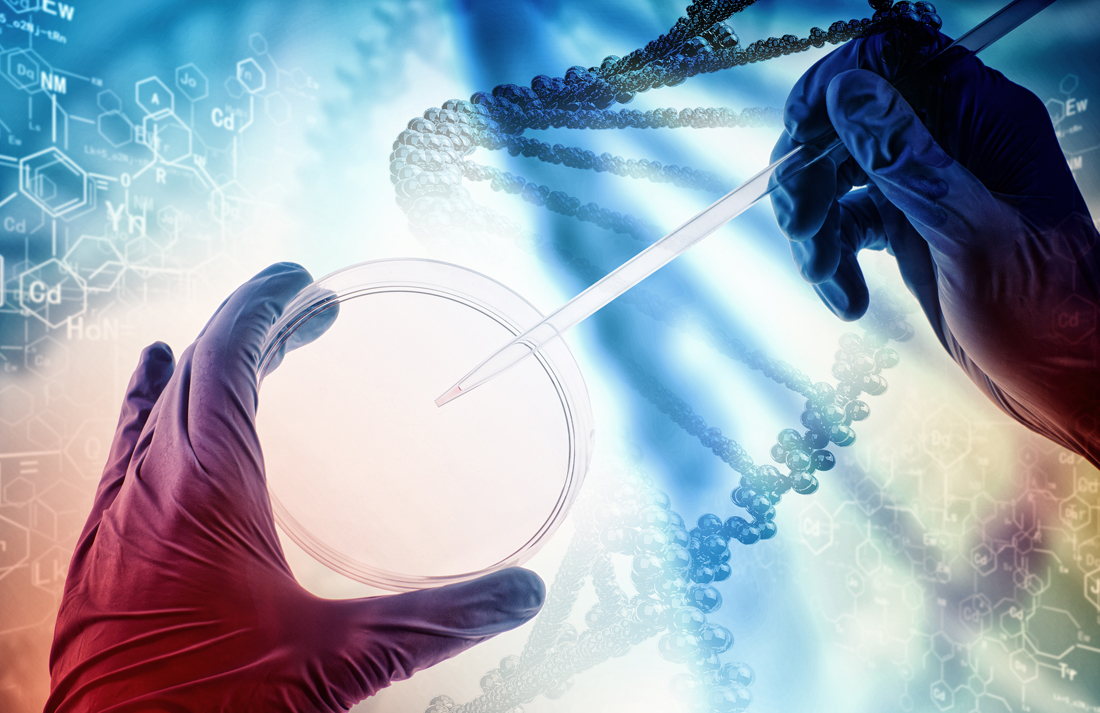The Life Sciences Report: You are chairman of BioMarine International Clusters Association (BICA), which supports companies that harvest the resources of the sea, or what is known as the "blue economy." How large and diverse an economy are we talking about?
Pierre Erwes: In 2008 there were only 2,000 references on the Web to the "blue economy." Now, you can find more than 20 million references, so it is growing exponentially. The biomarine industry represented $186 billion ($186B) alone last year. Unfortunately, this industry is still structured in silos, and the blue complement lacks visibility.
Marine biotech represents 8% of the total of the biotech market, and biomaterials account for less than 1% of the total market. Bioenergy is 2% of the energy market. Blue chemistry, which is one of the largest segments, is producing only 6% of the total chemical product globally. Marine compounds represent 13% of the cosmetic market right now. Aquaculture has made the most progress, producing 20% of the animal protein delivered annually to 2.6B people. Marine DHEA, omega-3 and omega-6 products represent 32% of the nutraceutical market, and marine ingredients represent 38% of the natural compounds market.
TLSR: This is a diverse and scattered market. Where will the biggest growth be seen in the coming years?
PE: The last revolution was the Internet, and the next revolution will probably be bioplastics. Some 20% of the starch we're going to use for the bioplastic market could come from seaweed by 2030.
"Stellar Biotechnologies Inc. is one of my favorites."
There is huge growth potential for this market. Every year it's growing: $186B is a tiny part. There are new developments in pharmaceuticals, in biotech, in food and nutrition. It's amazing, actually.
TLSR: Are some countries more focused on developing this economic area than others?
PE: The technology is largely in the developed countries. Despite technology advancements in Europe—particularly Norway, Scotland, France and Portugal—and the established leadership of Canada, the U.S. and a growing part of China, emerging countries could be key actors in the blue economy because many are coastal countries, with access to this rich resource.
It is important that the marine economy be developed in a sustainable way. Mozambique has decided to develop its aquaculture plan, and to avoid the mistakes that other developing countries have made, it has asked BICA to support its aquaculture plan and bring investors, technology and expertise. It's going to be a real industry partnership with a significant economic outcome for the country. Every developing country is looking to the ocean with specific interest.
TLSR: Do governments get involved in the blue economy by devoting research resources, creating environmental guidelines, or even awarding incentives to promote biomarine business?
PE: Absolutely. Regulatory controls are an essential part of normalizing the industry, particularly for the nutraceutical market. For example, the extract from seaweed varies wildly from one country to another. It might take five to six years to get guidelines in place, but that will allow producers to access the most fruitful markets—Europe and North America.
TLSR: Do you think investors understand the opportunities in this area?
PE: Investors have to be very careful about approaching emerging opportunities. But a new generation of young investors is showing a growing interest in our field. Some that we are working with include Francisco Gomes, former executive from Novus International Inc., now CEO of Pontos Aqua Holdings LLC; Mike Velings at Aqua-Spark; and the Holberg Fondene Triton fund in Bergen, Norway, which is exclusive to aquaculture.
Providing protein is one of the most critical issues our societies will face in the coming decade. The oceans are providing the right answers to this future crisis. Investors know that. They have to be careful about scouting the right opportunities, but it's becoming the right time. More investors are attending our annual platform because it is the best way to scout the opportunities.
TLSR: Let's talk about some of the public companies advancing in the sector.
PE: One of my favorites, which we have been working with for quite a long time, is Stellar Biotechnologies Inc. (SBOT:NASDAQ; KLH:TSX.V), which presented at our last convention in North Carolina.
"Emerging countries could be key actors in the blue economy because many are coastal countries."
While I cannot speak on Stellar’s direct behalf, the company has publicly disclosed the importance of the positive news regarding the agreement with Neovacs SA (ALNEV:Alternext Paris), which I believe will reinforce the demand for Stellar's keyhole limpet hemocyanin (KLH) as a carrier molecule in immunotherapy treatment, such as IFNα-Kinoid in lupus. The trademarked KLH is a key ingredient in clinical-stage immunotherapies targeting metastatic breast cancer (in Phase 3), ovarian cancer (in Phase 2), Alzheimer's disease (in Phase 2), lupus (in Phase 2), and Crohn's disease (in Phase 1).
TLSR: In addition to therapeutic applications, KHL is also being used as an immunodiagnostic test. Where do you see the more immediate value proposition?
PE: In terms of potential market, the pharmaceutical market is definitely the most attractive. If the drug is recognized and the right patent comes at the right time, then it's going to be a gold mine. But the diagnostic market could be accessed more quickly, and it's very well developed already. I think the two directions are very interesting.
TLSR: Stellar just uplisted to NASDAQ. Will that help bring North American investors to the story?
PE: Stellar has stated the listing on the NASDAQ is a significant milestone for the company and an important step in its continued corporate growth and maturity as a public company. Management believes the NASDAQ listing will raise visibility within the investment community and with institutional investors, and will offer its shareholders an opportunity for increased liquidity.
TLSR: Let's talk about another company.
PE: Fermentalg SA (FALG:FR) is a French microalgae producer led by CEO Pierre Calleja. Faced with the patent dominance of DSM Nutritional Products Ltd. (through Martek Biosciences Corp.) in heterotrophy, Fermentalg developed technology that allows it to develop molecules rich in omega-3s (EPA-DHA) from microalgae bred using mixotrophy (heterotrophy with some type of light). The company is working on a new strain that can produce two or three times more omega-3 and omega-6 than the best strain on the market.
This is one of the best performing microalgae companies I've ever seen. Pierre is pushing hard to establish partnerships in Asia and the U.S. so he can become a global player. The company also has an arachidonic acid product, which is very important for infant nutrition, where there is a lot of demand. The potential of this company should be revealed in 2016.
TLSR: What about some companies that could be going public soon?
PE: A small company called Eviagenics (private) recently restructured its organization. On Nov. 23, it sold its flavonoid biotech platform to Alderys (private). Fabrice Bohin, the CEO, decided to sell this so the company could concentrate on the development and extraction of molecules from seaweed. Alderys would be the working partner on the technology side to help Eviagenics develop its public offer.
"Regulatory controls are an essential part of normalizing the industry, particularly for the nutraceutical market."
The company also completed a deal with Gelymar SA (private), which is in Chile and one of the world's largest producers of carrageenan, which is red algae. Gelymar and Eviagenics will be a very interesting partnership to follow. Demand is very high in Europe for biomolecules extracted from sustainable seaweed. There is huge potential for such a company in cosmetics, pharmaceuticals and nutrition. There is an "El Dorado" of possibilities.
TLSR: Is there a timeline for going public for this company?
PE: Fabrice Bohin, the young CEO, will make the necessary decisions to prepare the company for this important move. At this time, the development of biomolecules extraction will be his primary focus, especially with the strong partnership that has been established with Gelymar. I'm convinced that Fabrice is clever enough to take the company in the right direction.
TLSR: How about another company?
PE: RC INNPharma Corp. (private) has several products in its development pipeline. The malaria ACT product is approved and is the preferred treatment of the World Health Organization (WHO).
The WHO has not yet approved any small molecule inhibitors of dengue fever, and no companies have sought approval of any products that we are aware of. INNPharma is in the process of scheduling a clinical trial in the Dominican Republic. The clinical trial protocol has been written by a WHO expert on dengue fever.
The INNPharma dengue fever therapeutic is a combination formula, because the company believes that there is no single molecule that can address the multiple pathologies that occur during the course of dengue fever infection. The marine component is a seaweed extract that is a viral attachment inhibitor and also neutralizes the virions—the particles that spread cell-to-cell infection. The INNPharma replication inhibitor is a plant flavonoid that can reach human serum levels when administered orally and has been demonstrated to kill dengue 1-4 serotypes in vitro. The third component is an immunomodulator that prevents cytokine spikes, which are responsible for the release of endotoxin 1 from the spleen and endotoxin 2 by the immune responder cells. Endotoxin 1 causes cytokine "storm," and endotoxin 2 release causes cytokine "tsunami," which pushes patients into the complications of dengue.
RC INNPharma has been working silently for years, and is about to finalize its malaria product and get it on the market. That's going to be revolutionary. The company has been working with private funding, and will soon start raising money. The chairman of the board and the chief financial officer are looking to industry investors to help them finalize the product. This could be a very good time for investors to get into the company, just before the product goes on the market. Next year—2016—will be key for RC INNPharma.
TLSR: Do you want to mention one more?
PE: Yes. Setubio (private), a French company, is one of the greatest investment opportunities in the biomarine industry. Marine bacteria are responsible for biofilms. The study of biofilms has allowed the development of a new kind of natural antifouling, which is very important if we wish to comply with the Europe's new REACH (Registration, Evaluation, Authorization and Restriction of Chemical Substances) regulations, and which could rapidly become an alternative to the billion-dollar chemical paint we are putting on tankers and offshore structures. Setubio has developed a screening platform for a wide range of experiments to test biological effects, breed expert and specialized bacteria, kill the wrong microbes, develop the right biofilms, and stop parasites. It is conducting in vitro experiments in its labs in partnership with the cosmetic, chemical, environmental and pharmaceutical industries.
"The blue economy is growing exponentially."
CEO Jean-Christophe Sergère is leveraging the technology platform to attract industry investors. This year, the company reached the commercial stage for one product. The second one is about to enter into the animal protein clinical model.
The company is currently seeking new investors to foster development. Sergère is addressing the most important segments of our biomarine industry: feed, nutrition, cosmetics, pharma and environmentals. This is a steady market. The return on investment could be quick, from five to seven years. I believe the next step will be to float the company, maybe in Canada, either in Vancouver or Toronto. That could be a first step to accessing the U.S. market.
TLSR: When can investors next see BioMarine opportunities presented?
PE: BioMarine is an investment platform. We select 350 CEOs out of 350,000 active members of the biomarine community and let them go in live broadcast interview sessions over two days. Bring your running shoes, because this is where deals are made. The next convention will be Oct 19–21, 2016, in Oslo, Norway. In the meantime, BioMarine will partner with other events around the world, including in Europe and China. Prince Albert II of Monaco is the honorary chairman of the BioMarine International Clusters Association, and is actively working to develop the ocean sustainably. Momentum is building.
TLSR: Thanks for speaking with us.
Pierre Erwes is an oceanographer by training, with later specialization in IT, robotics and marketing. He is an entrepreneur who has more than thirty years of international experience, primarily in the areas of business development in new technologies, biotech and pharmaceuticals, as well as in the marine bioresources. In 2008 he launched the Biomarine investment platform, and in January 2013 the BioMarine International Cluster Association, with the mission to be a champion for the marine bioresources and their sustainable and innovative utilization.
Want to read more Life Sciences Report interviews like this? Sign up for our free e-newsletter, and you'll learn when new articles have been published. To see recent interviews with industry analysts and commentators, visit our Streetwise Interviews page.
DISCLOSURE:
1) JT Long conducted this interview for Streetwise Reports LLC, publisher of The Gold Report, The Energy Report and The Life Sciences Report, and provides services to Streetwise Reports as an employee. She owns, or her family owns, shares of the following companies mentioned in this interview: None.
2) The following companies mentioned in the interview are banner sponsors of Streetwise Reports: Stellar Biotechnologies. The companies mentioned in this interview were not involved in any aspect of the interview preparation or post-interview editing so the expert could speak independently about the sector. Streetwise Reports does not accept stock in exchange for its services.
3) Pierre Erwes: I own, or my family owns, shares of the following companies mentioned in this interview: None. I personally am, or my family is, paid by the following companies mentioned in this interview: None. My company has a financial relationship with the following companies mentioned in this interview: None. I was not paid by Streetwise Reports for participating in this interview. Comments and opinions expressed are my own comments and opinions. I determined and had final say over which companies would be included in the interview based on my research, understanding of the sector and interview theme. I had the opportunity to review the interview for accuracy as of the date of the interview and am responsible for the content of the interview.
4) Interviews are edited for clarity. Streetwise Reports does not make editorial comments or change experts' statements without their consent.
5) The interview does not constitute investment advice. Each reader is encouraged to consult with his or her individual financial professional and any action a reader takes as a result of information presented here is his or her own responsibility. By opening this page, each reader accepts and agrees to Streetwise Reports' terms of use and full legal disclaimer.
6) From time to time, Streetwise Reports LLC and its directors, officers, employees or members of their families, as well as persons interviewed for articles and interviews on the site, may have a long or short position in securities mentioned. Directors, officers, employees or members of their families are prohibited from making purchases and/or sales of those securities in the open market or otherwise during the up-to-four-week interval from the time of the interview until after it publishes.





































